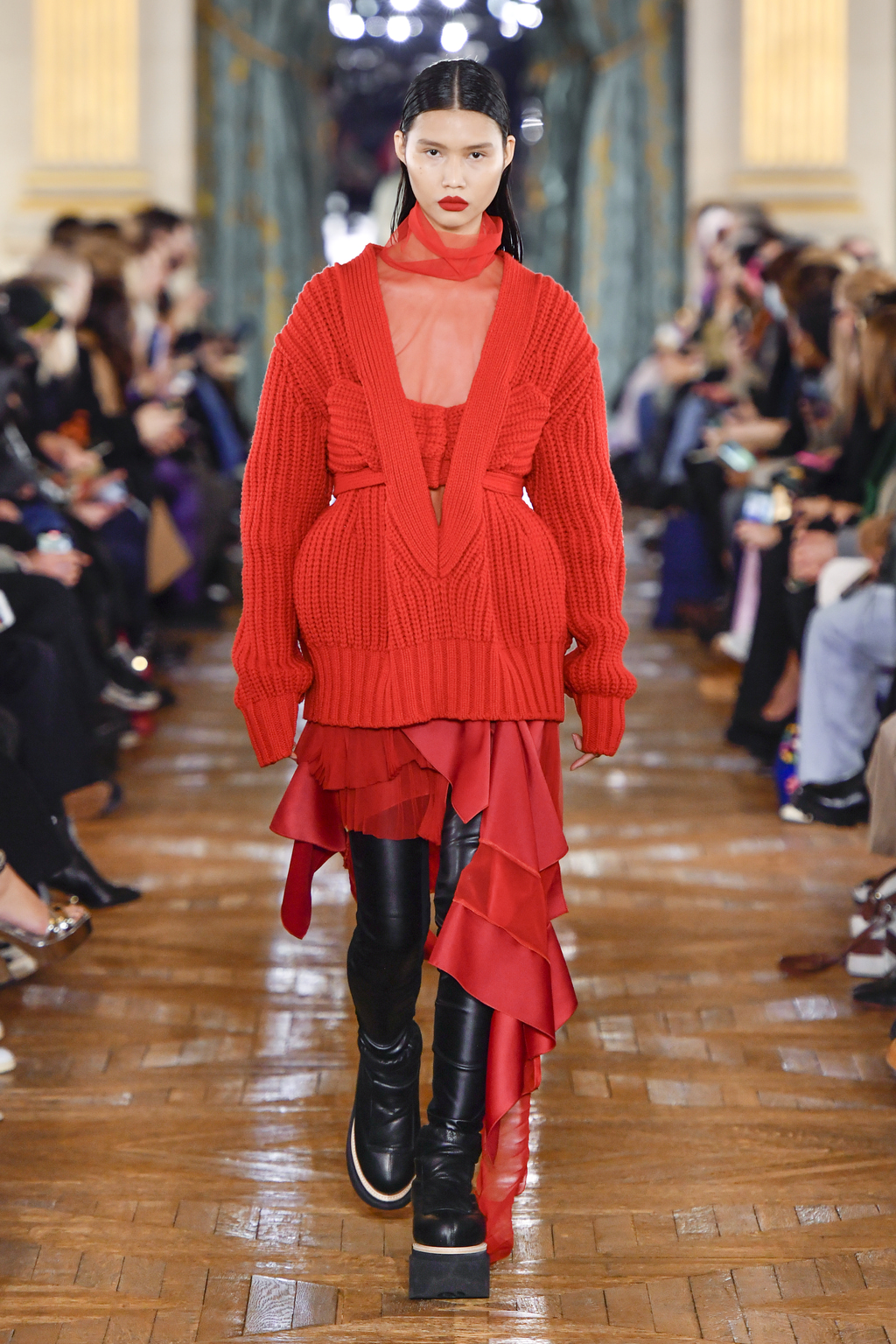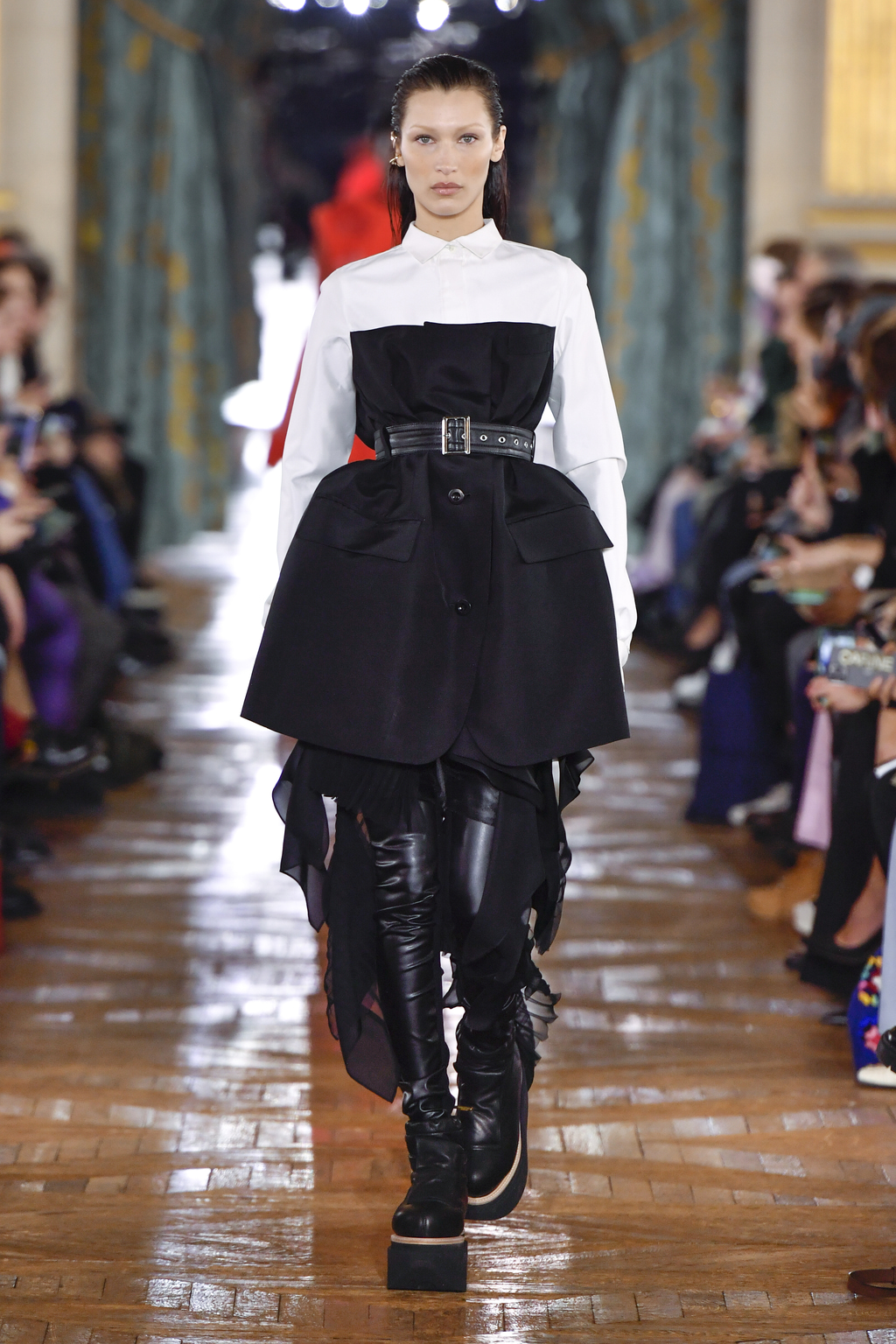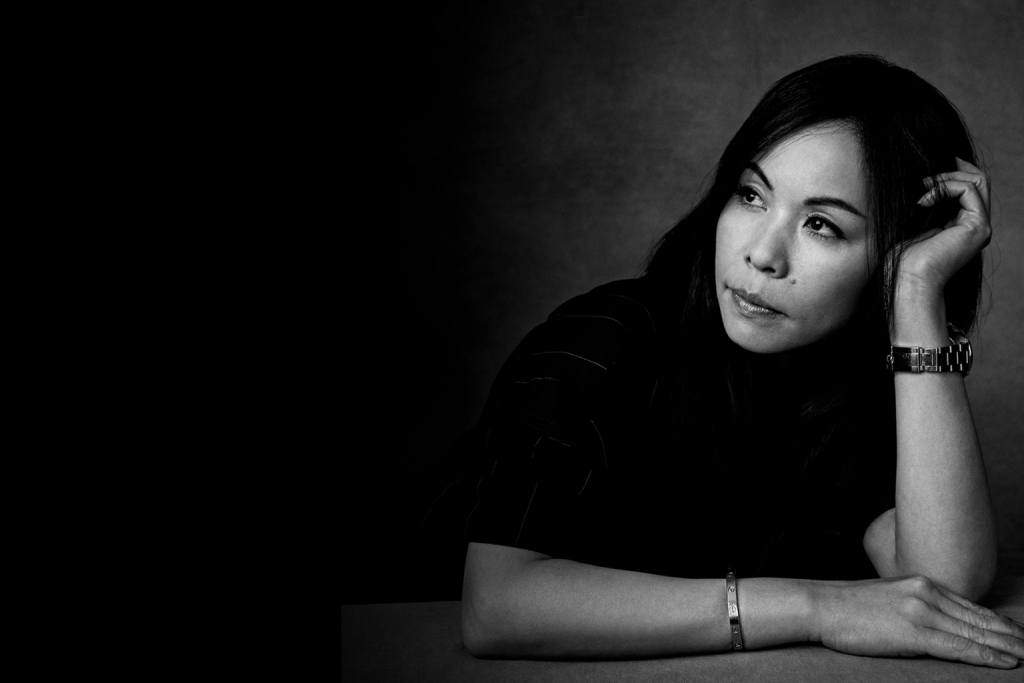Building, growing and progressing. Moving forward, pushing creative margins, fighting against the natural practice of looking back to easier and more comfortable times, to rail against what F. Scott Fitzgerald writes as being “borne back ceaselessly into the past” — these are all qualities and the underlying ethos of Sacai designer Chitose Abe.
Sacai isn’t just another Japanese brand. It’s become legendary, talked about with hushed reverence. It’s been about a decade since Abe started showing her collections for Sacai in Paris and since then her stock, in the fashion industry, has reached meteoric levels.
Pharrell Williams, Gwyneth Paltrow and Michelle Obama are just a few of the label’s celebrity fans and as Abe takes Sacai to new artistic levels with collaborations with a multitude of luxury brands it would be nonchalant to pigeonhole the brand as being just another brand geared towards affluence and ostentation. The reason for this is that Sacai is known and respected, among fashion insiders, for bridging the expansive gap between casualwear and luxury, straddling both the streets of Tokyo and the boulevards of Paris like a magician’s legerdemain.
In an interview with TW, conducted over email, Abe says of this duality:
“Our brand concept, creating a design accustomed to daily life, hasn’t changed since the foundation of the brand. The way journalists describe it in such a way may be because many people who live in today’s society cherish having different characters, like myself. No matter how new and revolutionary of a design you make, if it’s not something that’s wearable, then I don’t think it has very much meaning. I myself am a designer, but also a business owner, and a mother. Like myself, people who live in different scenes have many unique faces and therefore the clothes I make, which are what I feel I want to wear, emphasize people to Sacai.”

Abe has had, what seems like, an innate relationship with fashion since her youth growing up in Gifu Prefecture. Her path to Sacai included time at iconic Japanese brand Comme des Garçons where, in an interview with fashion journalist Tiffany Godoy for Ssense magazine, she says, “It was about being an original. Another thing was business. Fashion is business, and I learned how to strike a balance between business and creative. I think that might be the biggest lesson that has stuck with me throughout the years.”
Beginning as a small knitwear brand in 1999, Sacai developed into something bigger, something more cerebral. A brand for people who are serious about fashion and about the constructs behind it.
As she mentioned to Godoy, “I wanted my brand to make people think, ‘Oh, there’s a different approach!’ I was very small. Typically, when you have a little traction you make a store, then a bag, then a fragrance, or go to Paris. I wanted to reject that progression and instead do things my own unique way. Well, I still feel that way today. I hate that kind of ‘everyone else is doing it so I’ll do it, too’ kind of mentality. I only do what I do because it’s truly necessary.”
Abe is, in interviews, justifiably proud of being a female entrepreneur, business owner and creative lead in a world stifled by fashion conglomerates and patriarchy.
“Being independent means there’s no pressure to grow revenue but at the same time, fashion is business, so revenue is very important, and as a business owner I don’t want to do something that drops the revenue,” she says. “I don’t want to do something just to grow revenue. I take both revenue and creation seriously and value both, but more so for the creation, which is the priority for me, and being able to do so is because I’m the sole owner while being the designer.”

Abe’s creative and business nous has been instrumental in Sacai flourishing over the last two decades. Abe’s drive to push creation and to team up with an eclectic spectrum of brands keeps Sacai at the forefront of fashion and style, illustrated by luxury tie-ups with Dior and Cartier or hugely successful collaborations with Nike and A.P.C. Although collaboration is hardly a new concept in fashion, Abe seems to take the concept more personally.
“Collaborations for Sacai are most times family-based, which means that the reason we work together is because two brands met as a result of acknowledging Sacai’s clothes,” says Abe. “We also collaborate to gain more technical and skill sets from the partner, but what’s important in the collaboration process is mutual respect and for both brands to grow, so I always try to communicate and have a 50-50 balance between the brands. I also feel being able to enjoy the work of collaboration is very important.”
Although Sacai is a fashionable and sophisticated brand which shows at the Paris collections, its roots and creative core are still very much based in Tokyo. With a stunning, yet understated flagship store in Minami-Aoyama, Abe is able to tell her visual narrative through the store and through her womenswear, menswear and accessory collections. Narrative is important for Abe, every collection has a theme, a leitmotif, a flicker of an idea which can also be viewed at the flagship space.
Abe says, “My request was to make a place which is a hybrid of elegance and different and unmatched materials. Fashion and architecture are different genres, but both are creative, so I felt we had done something interesting.”

This year Abe embarked on a collaborative project with Cartier. The brief was to reinterpret and reimagine the French luxury brand’s seminal Trinity jewelry. As Lynn Yaeger writes in Vogue, “Trinity for Chitose Abe of Sacai manages to feel both timeless and incredibly fresh, the hipster cousins of the triple loops that have nestled in jewelry boxes for decades. But age has not withered them — from the start, Trinity was meant to be worn by either gender, an extremely prescient notion back in 1924 when they were introduced.”
Never stagnant and always on the lookout for fresh opportunities and ideas, Abe pushes herself and her brand forward. I ask what Tokyo means to her and if she still finds inspiration in her adopted hometown.
“The lifestyle in Tokyo is very unique from overseas,” she says. “There’s a vague border between formal and casual in Tokyo, like wearing your work attire which you wore in the morning straight to dinner and a party. I also find that Japanese are keen to incorporate new culture, street culture into their fashion, and oftentimes they’re very good at it.”

When interviewing designers I’m always intrigued about what keeps their engines running. What motivates them for the future, why the desire or need to keep creating? In the last two decades the fashion industry seems like a grown-up version of musical chairs with designers changing brands every season.
Have a peek at the careers of say Raf Simons, Kim Jones or Clare Waight Keller and you see movement and a peripatetic journey. Abe, on the other hand, has been at the helm of Sacai from the beginning. It’s her baby, her brand and she has the artistic freedom to do whatever she wants. It’s this freedom, this emancipation which keeps Sacai so box-fresh.
What does the future hold for Abe and Sacai? “I don’t have any specific goal of what I want to be,” she says. “But I do want to be confident and be kind when I wear Sacai. I say this because for me, clothes, fashion is a tool which can bring emotions and touch one’s heart, and therefore it’s so fun to make clothes enjoyable. There are many more things I feel Sacai can do, so I’m looking forward to how both myself and Sacai can evolve.”
For more information about Sacai check out the brand’s official website.
Updated On January 16, 2023









